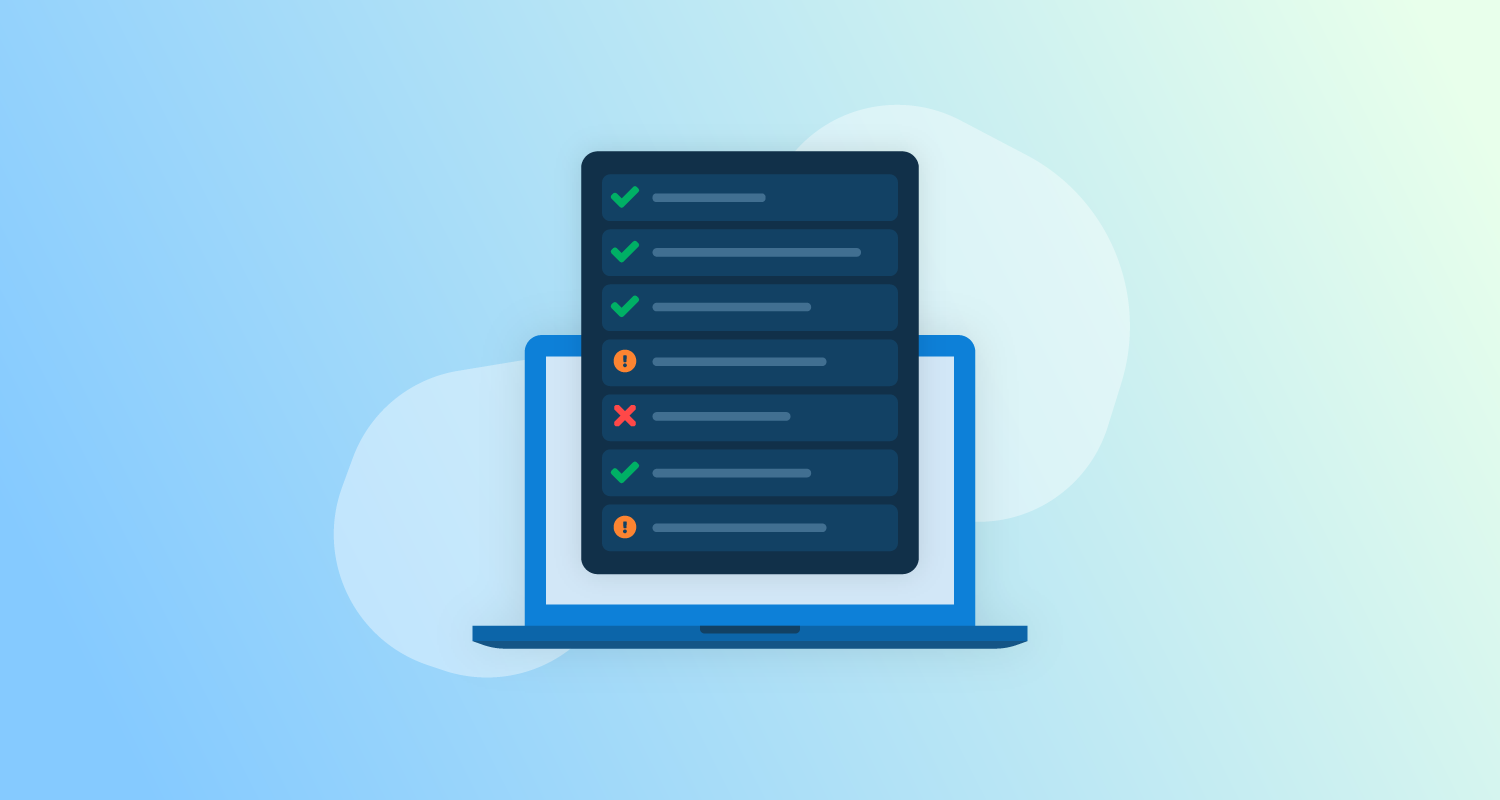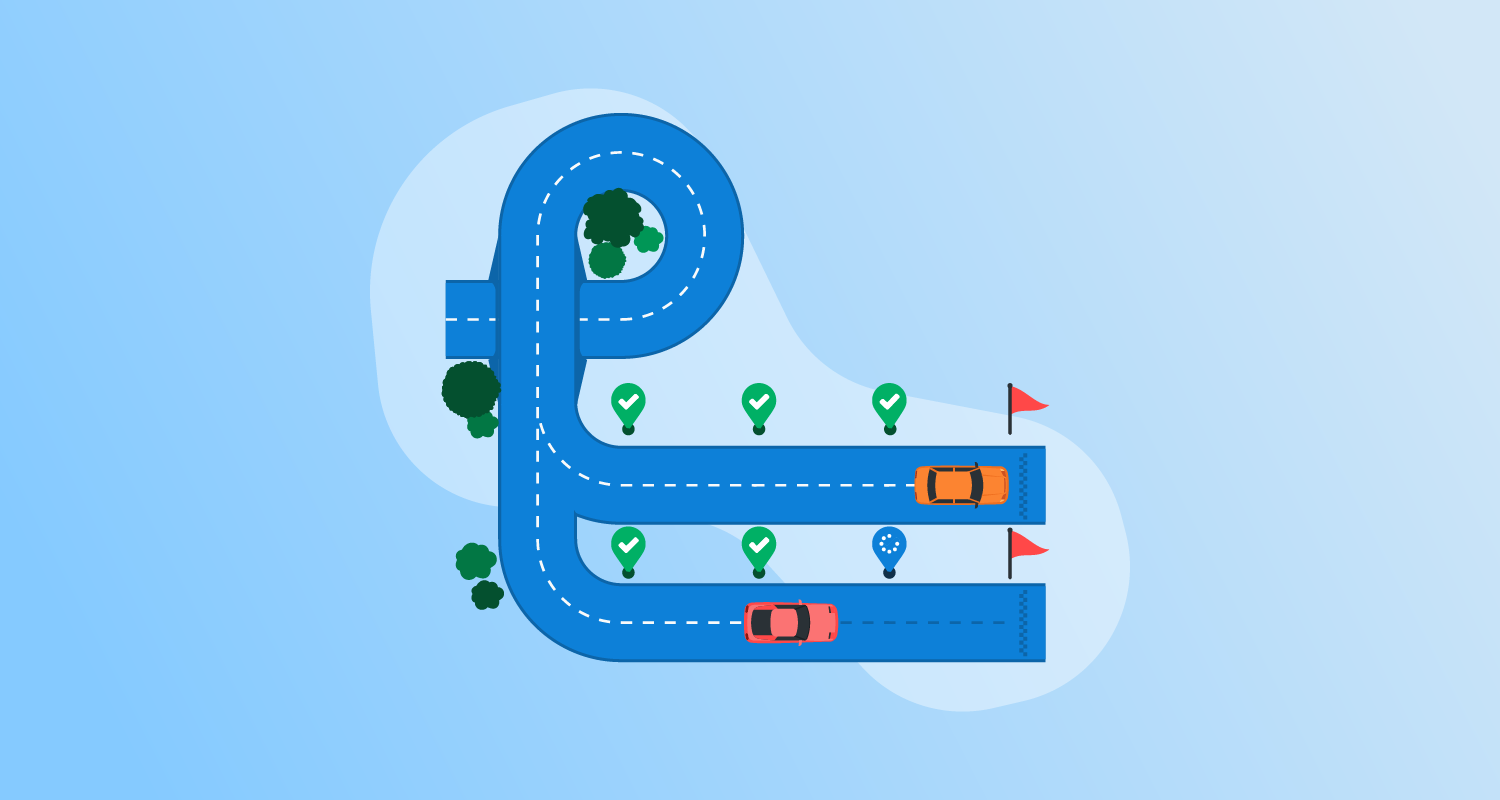What is CI/CD software?
CI/CD software automates key stages in software development and delivery. It combines tools and practices from Continuous Integration (CI), Continuous Delivery (CD), and Continuous Deployment (also CD), allowing teams to build, test, and deploy code efficiently and reliably.
Continuous Integration is the practice of frequently merging code changes into a shared repository, usually several times a day. Each change triggers automated builds and tests to detect integration issues early. Continuous Delivery extends CI by automating the release process up to production. Code is always in a deployable state, but deployments still require a manual approval step.
Continuous Deployment goes one step further by automating the release into production without human intervention. Every successful code change passes through testing and is deployed automatically.
CI/CD software helps teams catch bugs early, reduce manual work, and speed up delivery cycles. It ensures consistent deployment processes, minimizes errors, and supports fast feedback loops, which are essential for iterative development.
Key features of CI/CD software
CI/CD software solutions typically include the following capabilities.
Automated build processes
CI/CD software automates build processes, reducing manual efforts required to compile, package, and deliver code. These tools automatically trigger builds upon code changes, ensuring teams always work with up-to-date builds. This automation decreases the likelihood of code integration issues by testing and assembling code changes continuously.
Simplified build processes enable quicker iterations and ongoing delivery. They allow teams to detect and address bugs sooner, ensuring high-quality releases. Automated builds also decrease the time to market. By automating builds, teams can maintain development momentum and focus on new feature development and improvement.
Version control system integration
CI/CD tools integrate with version control systems (VCS), managing code changes efficiently. VCS integration enables collaboration by allowing multiple developers to work on separate features without interfering with one another. It tracks changes, maintains historical code versions, and enables quick rollbacks if necessary.
This integration also enables automated testing and deployment on every commit or pull request. As a result, teams catch integration errors early, promoting better code quality. VCS integration within CI/CD solutions provides transparency and traceability, crucial for diagnosing issues and maintaining accountability in the development process.
Pipeline as code
Pipeline as code is the management and configuration of build and deployment processes through code. This practice allows for versioning of pipeline configurations, ensuring consistency and reproducibility across different environments. Teams can store pipeline configurations in VCS, enabling collaboration and review among developers.
Pipeline as code also enables automation at all stages of the software delivery process, from initial code commit to final deployment. By codifying pipelines, organizations can implement standard practices, reduce manual errors, and improve flexibility.
Parallel execution
CI/CD software supports parallel execution, which allows teams to run multiple tests and build processes simultaneously. This feature considerably reduces the time required to validate code changes and complete deployments. Parallel execution leverages hardware and cloud resources efficiently, optimizing the entire Continuous Integration and delivery pipeline.
Adopting parallel execution minimizes bottlenecks, enabling faster feedback loops and accelerating feature delivery. It ensures comprehensive test coverage within shorter timeframes, substantially improving software reliability. By executing tasks in parallel, teams can speed up their development cycles.
Environment provisioning
Environment provisioning involves the automated setup and configuration of testing and deployment environments. CI/CD tools aid in creating consistent and reproducible environments, mitigating issues caused by environment discrepancies. Environment provisioning automates resource allocation, configuration management, and system readiness.
With automatic environment provisioning, teams experience reduced setup times and improved deployment consistency across different stages. These tools handle infrastructure dependencies, reducing downtime and manual configuration errors.
Notable CI/CD tools for DevOps
10 Notable CI/CD solutions
1. Octopus
Octopus Deploy is a sophisticated, best-in-class Continuous Delivery (CD) platform for modern software teams. It offers powerful release orchestration, deployment automation, and runbook automation while handling the scale, complexity, and governance expectations of even the largest organizations with the most complex deployment challenges.
Features:
-
- Reliable risk-free deployments: Octopus lets you use the same deployment process across all environments. This means you can deploy to production with the same confidence you deploy to everywhere else. Built-in rollback support also makes it easy to revert to previous versions.
-
- Deployments at scale: Octopus is the only CD tool with built-in multi-tenancy support. Deploy to two, ten, or thousands of customers without duplicating the deployment process.
- One platform for DevOps automation: Runbooks automate routine and emergency operations tasks to free teams for more crucial work. They can also be used to provide safe self-service operations to other teams.
- Streamlined compliance: Full auditing, role-based access control, and single-sign-on (SSO) as standard to make audits a breeze and to provide accountability, peace of mind, and trust.
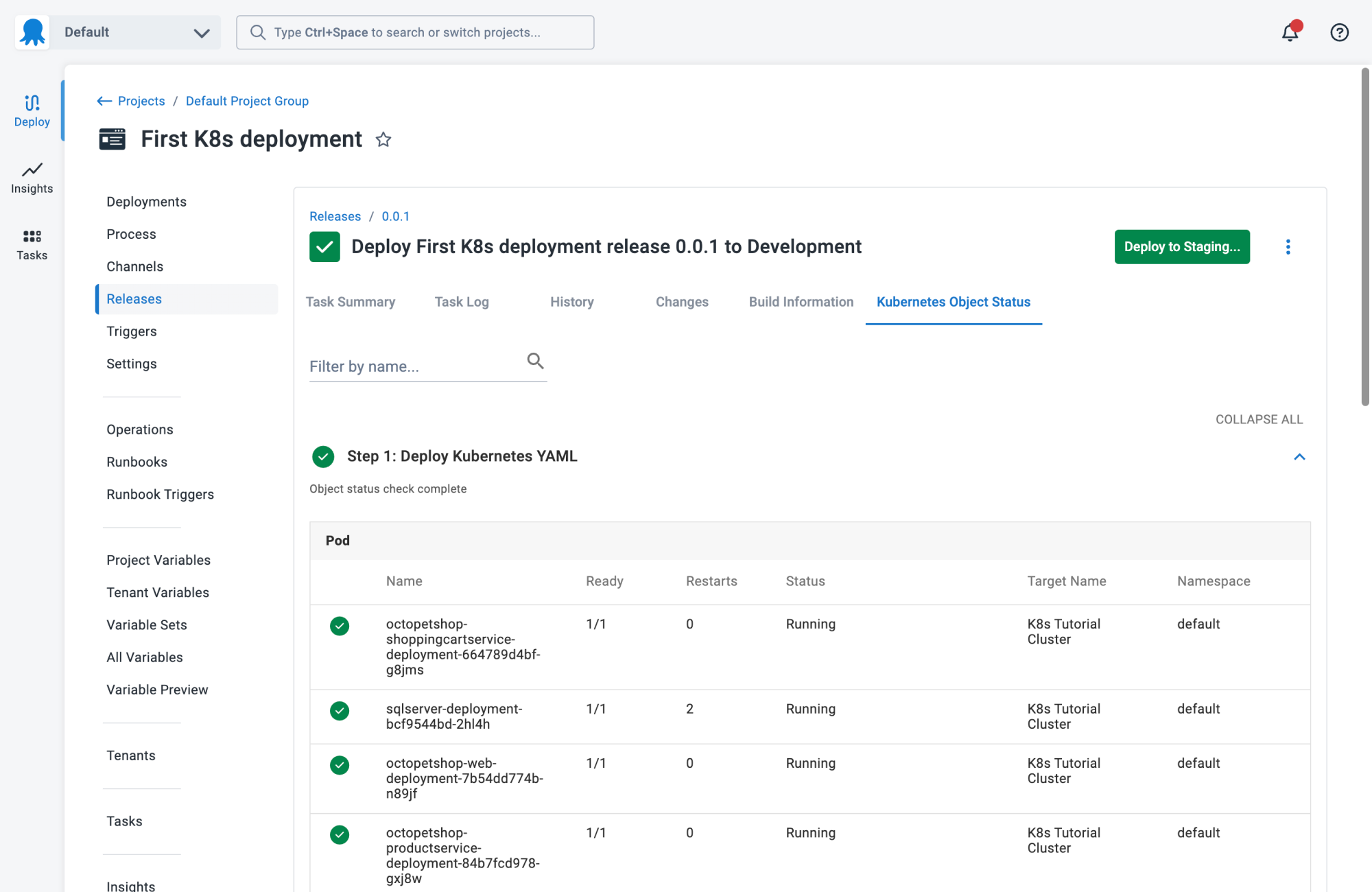
2. Jenkins
Jenkins is an open-source automation server that automates tasks such as building, testing, and deploying applications. It runs as a standalone web application or within servlet containers like Apache Tomcat. Jenkins supports multiple version control systems, including Git, Subversion, and Mercurial.
Key features include:
- Plugins: Offers a large library of plugins that extend its functionality, enabling integration with version control systems, build tools, testing frameworks, and cloud environments.
- Flexible build triggers: Builds can be triggered through various methods, such as webhook notifications, scheduled cron jobs, manual execution, or dependencies on other builds.
- Pipeline as code: Supports declarative and scripted pipelines using Apache Groovy, allowing teams to define and manage CI/CD workflows in code.
- Distributed builds: Enables distributed build execution across multiple machines, optimizing resource use and reducing build times for large projects.
![]()
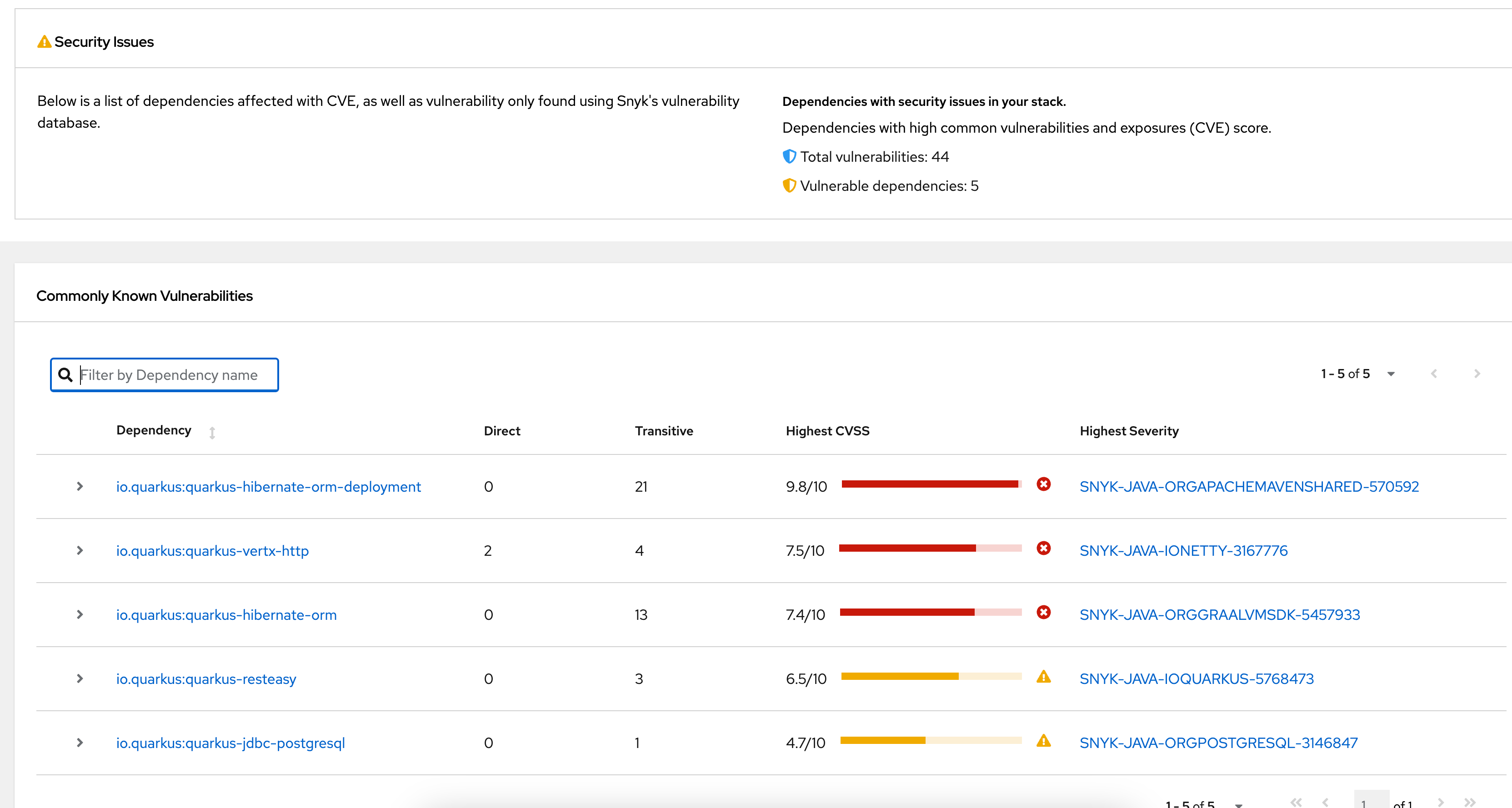
3. GitLab CI/CD
GitLab CI/CD is an automation platform that automates the process of building, testing, packaging, and deploying applications. GitLab CI/CD provides built-in pipeline templates, security scanning, and compliance enforcement.
Key features include:
- Automated CI/CD pipelines: Automates the software delivery process, from code commit to production.
- CI/CD catalog: Developers can use pre-configured CI/CD components from a public catalog or create private catalogs to standardize pipelines within their organization.
- Merge trains: This feature ensures a stable main branch by automatically sequencing multiple merge requests, preventing integration conflicts.
- Parent-child pipelines: Allows splitting complex pipelines into smaller, more manageable parts to improve performance and reduce execution time.
- Hosted runners: Teams can run CI/CD jobs on GitLab’s managed infrastructure or bring their own runners.
![]()

Source: GitLab
4. GoCD
GoCD is a free and open-source CI/CD server for modeling and visualizing complex software delivery workflows. It provides a value stream map to help teams identify inefficiencies and optimize their Continuous Delivery process. GoCD does not require additional plugins for key functionalities.
Key features include:
- Value stream map: Visually maps the software delivery pipeline to track changes from commit to deployment and identify bottlenecks.
- Cloud-native deployments: Integrates with cloud platforms like Kubernetes, Docker, and AWS.
- Workflow modeling: Supports parallel and sequential execution, dependency management, and fan-in/fan-out workflows to optimize CD pipelines.
- Traceability: Tracks changes in real time, enabling teams to compare builds, analyze differences in files and commit messages, and troubleshoot broken pipelines.
- Artifact promotion: Ensures that tested binaries are passed through the pipeline stages, so teams can deploy trusted artifacts.
![]()
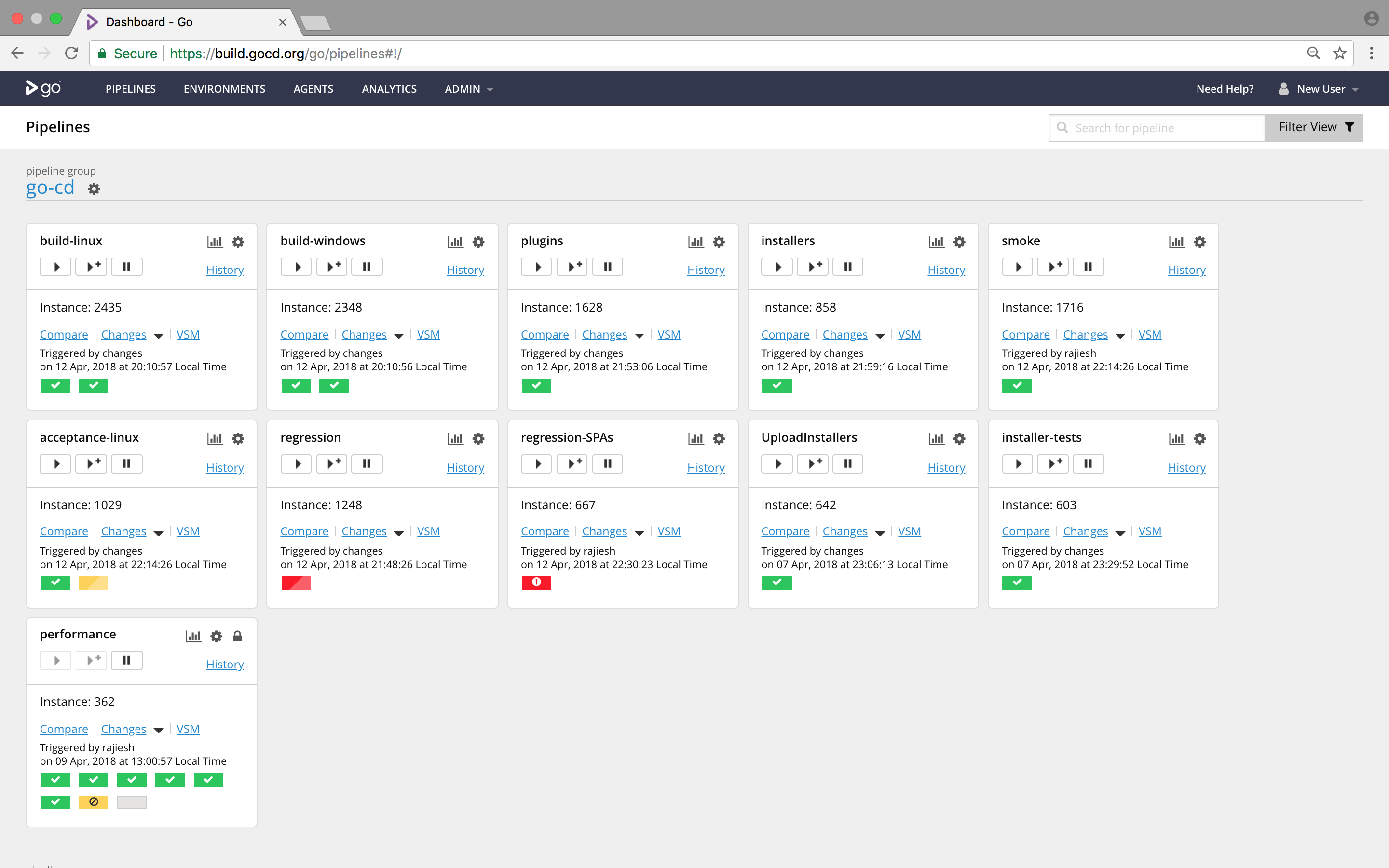
Source: GoCD
5. Buildkite
Buildkite is a scalable and CI/CD platform to help teams ship software faster. It enables unlimited concurrency, flexible compute options, and dynamic pipeline orchestration. It is built for organizations that prioritize scale, speed, and security.
Key features include:
- Scalable workflow orchestration: Pipelines provide workflow automation with dynamic pipelines, lifecycle hooks, and execution environments that adapt at runtime.
- Unlimited concurrency: Allows unlimited concurrent builds, enabling large-scale teams to ship software without waiting on shared resources.
- Test optimization with Buildkite test engine: Automatically quarantines flaky tests, splits test suites for parallel execution, and assigns ownership for faster issue resolution.
- Secure package management: Package registries provide artifact indexing, centralized policy controls, private storage links, and supply chain security.
- High-performance mobile CI/CD: Mobile Delivery Cloud accelerates mobile app development with hardware-assisted caching, Git mirroring, and simplified workflows for testing, signing, and deployment.
![]()
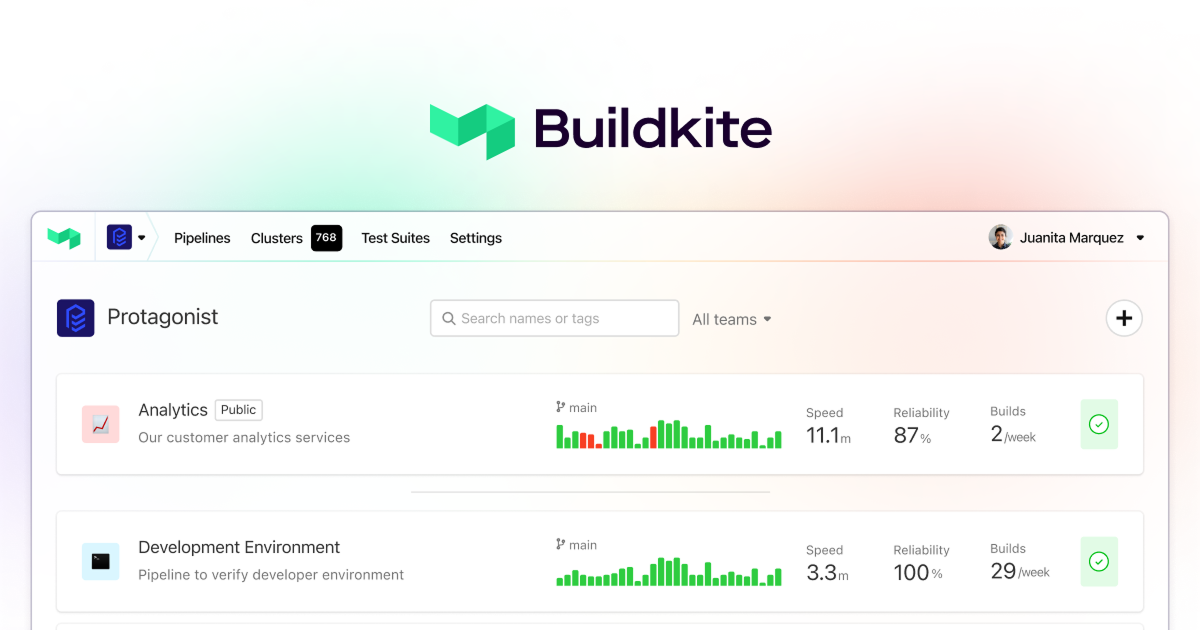
Source: Buildkite
6. Bamboo
Bamboo is a CI/CD server to automate software release management. It simplifies the CI/CD pipeline by managing builds, running tests, and deploying applications. Integrating with various version control systems and build tools, it helps ensure code changes are continuously tested and integrated.
Key features include:
- Automated CI/CD pipelines: Automates build, test, and deployment processes, ensuring consistent integration and fast feedback on code changes.
- Parallel and distributed builds: Supports parallel execution across multiple agents.
- Release management: Manages software releases by automating versioning, tagging, and deployment across environments.
- Flexible workflow organization: Uses a structured hierarchy of projects, plans, stages, jobs, and tasks to define and control the CI/CD process.
- Integration with version control systems: Connects with Git, Mercurial, Subversion, and other VCS tools to automatically trigger builds when new code is committed.
![]()

Source: Atlassian
7. BuildMaster
BuildMaster is a self-hosted CI/CD platform that automates builds and deployments while providing visibility over the release process. It acts as a centralized command center for managing software delivery, allowing teams to integrate existing tools and processes.
Key features include:
- Centralized CI/CD management: Provides a platform for automating builds, deployments, and releases, integrating with tools like Git and Jenkins.
- No-code & low-code pipeline automation: Users can create and modify CI/CD pipelines with drag-and-drop editors, predefined templates, or OtterScript.
- Git integration & branch management: Supports GitHub, GitLab, Azure DevOps, and Bitbucket, enabling visibility into branches, commits, and changes between builds.
- Import & manage build artifacts: Imports artifacts from existing CI tools, retains metadata, and allows teams to control which files are used in deployments.
- Docker & containerization support: Automates containerization, runtime configuration management, and environment-specific deployment.
![]()
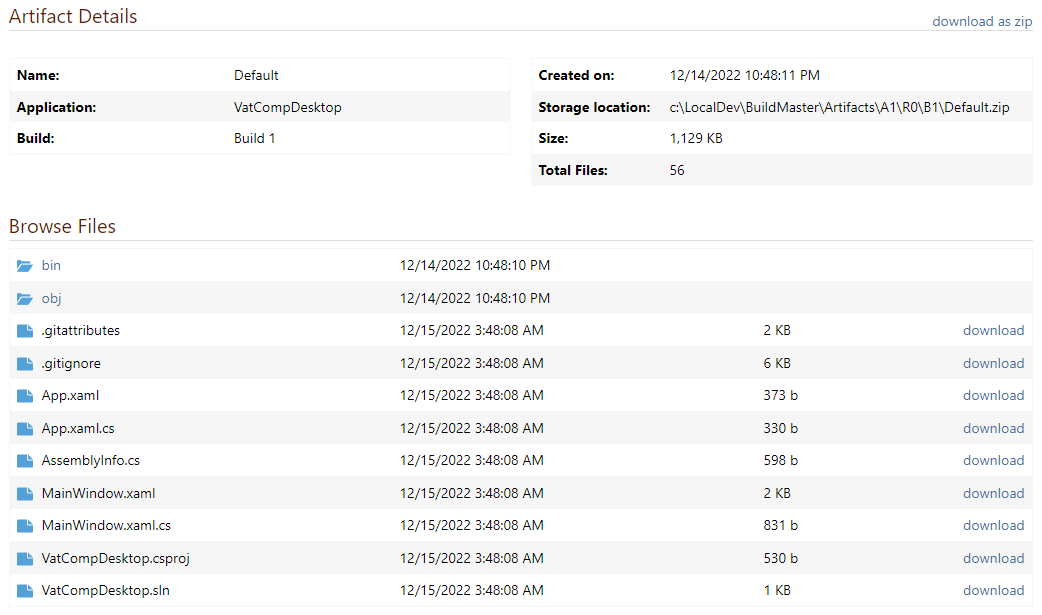
Source: Inedo
8. TeamCity
TeamCity is a CI/CD solution to optimize software delivery for DevOps teams. It enables build automation, test intelligence, and deployment orchestration while integrating with various tech stacks.
Key features include:
- Self-optimizing build pipelines: Automatically optimizes builds by reusing dependencies, caching results, and executing necessary steps.
- Parallel test execution & build reuse: Helps speed up CI/CD pipelines, minimizing the time required for testing and deployment.
- Scalability for any workflow: Supports small projects and scales to thousands of concurrent builds, with a multi-node setup available.
- Configuration as code: Build pipelines can be configured through a web UI or a strongly typed DSL, making it possible to version, reuse, and scale configurations.
- Feedback & fail-fast strategy: Provides instant feedback during builds, helping teams identify and resolve issues with test reporting and build logs.
![]()
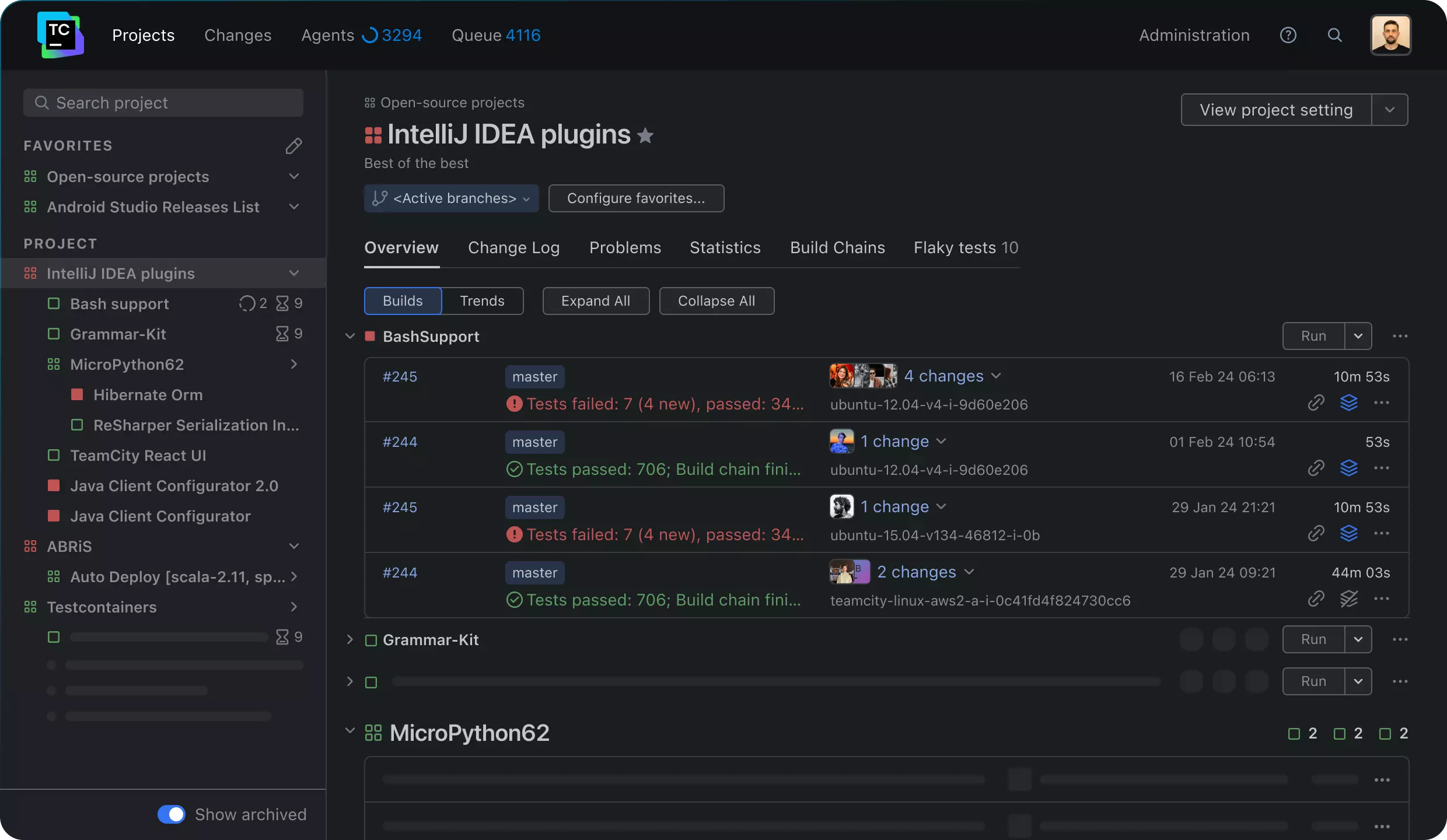
Source: TeamCity
How to choose CI/CD software
When evaluating CI/CD software products, organizations should consider the following.
Integration capabilities
The software should integrate with existing development tools like version control systems, testing frameworks, and deployment platforms. This compatibility ensures smooth transitions between different phases of the development cycle.
Evaluating how well a CI/CD tool integrates with cloud services and third-party APIs is also important. A flexible tool will adapt to evolving technological environments, supporting both current and future development needs.
Customization and extensibility
CI/CD software should offer customization to meet project needs. This capacity includes modifying workflows, setting up custom triggers, and scripting custom build steps. Customization ensures that the software aligns with diverse development practices and industry standards.
Extensibility is a related critical factor, allowing for the development and integration of plugins or extensions to improve functionality. An extensible CI/CD solution supports the continuous evolution of development practices, enabling teams to adapt to changing technologies and workflows efficiently.
Security and compliance
Security features in CI/CD software are imperative, especially for sensitive projects. The selected tool should provide security measures like encrypted data transfer, secure access controls, and compliance with regulatory standards. Security ensures that development environments and pipelines are protected against potential threats and unauthorized access.
Compliance features also play a vital role, as they ensure the CI/CD process meets industry standards and legal regulations. A tool that supports detailed audit trails and compliance reporting aids in maintaining accountability and transparency within development activities.
Community and support
Strong community backing and support infrastructure are essential. Tools with active communities and substantial documentation provide valuable resources for troubleshooting and learning best practices. User forums, development communities, and official support channels contribute to faster problem resolution and improved knowledge sharing.
Official support from the vendor, such as dedicated customer service and timely updates, ensures the tool remains reliable and functional. Access to quality support strengthens a tool’s usability and helps organizations overcome barriers to successful adoption.
Cost
Cost is a significant factor impacting the budget and ROI for development processes. Evaluating the tool based on initial setup costs, licensing fees, and ongoing maintenance charges offers a comprehensive understanding of the total cost of ownership. This assessment helps in aligning the tool’s features and benefits with financial constraints.
Investigating whether a tool offers a free tier or trial period can provide insights into its value proposition before committing financially. Analyzing the cost in context with the tool’s features and long-term scalability ensures a cost-effective and sustainable investment in CI/CD capabilities.
Conclusion
CI/CD software is essential for simplifying modern software development. By automating build, test, and deployment workflows, it reduces manual effort and improves consistency across environments. These tools help teams detect issues early, respond to changes faster, and deliver high-quality software at scale.
Help us continuously improve
Please let us know if you have any feedback about this page.

